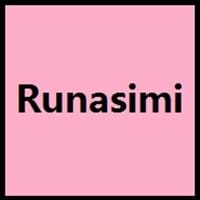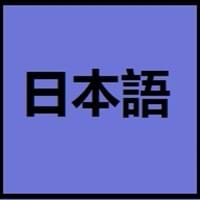Quechua vs Japanese
Countries
Argentina, Bolivia, Chile, Colombia, Ecuador, Peru
Japan
National Language
Bolivia, Ecuador, Peru
Japan
Second Language
Not spoken in any of the countries
Not spoken in any of the countries
Speaking Continents
South America
Asia, Pacific
Minority Language
Not spoken in any of the countries
Palau
Regulated By
Not Available
Agency for Cultural Affairs (文化庁) at the Ministry of Education
Interesting Facts
- One of the most widely spoken indigenous language in the America is Quechua.
- Quechua language has borrowed many words from Spanish.
- In Japanese Language, there are 4 different ways to address people: kun, chan, san and sama.
- There are many words in Japanese language which end with vowel letter, which determines the structure and rhythm of Japanese.
Similar To
Not Available
Korean Language
Derived From
Not Available
Not Available
Alphabets in
Quechua-Alphabets.jpg#200
Japanese-Alphabets.jpg#200
Writing Direction
Not Available
Left-To-Right, Horizontal, Top-To-Bottom
Language Levels
Not Available
Hello
Rimaykullayki
こんにちは (Kon'nichiwa)
Thank You
Solpayki
ありがとう (Arigatō)
How Are You?
Allillanchu
お元気ですか (O genki desu ka?)
Good Night
Allin tuta
おやすみなさい (Oyasuminasai)
Good Evening
Wuynas nuchis
こんばんは (Konbanwa)
Good Afternoon
Wuynas tardis
こんにちは (Konnichiwa!)
Good Morning
Wuynus diyas
おはよう (Ohayō)
Please
Not Available
お願いします (Onegaishimasu)
Sorry
Pampachaykuway
ごめんなさい (Gomen'nasai)
I Love You
Kuyayki
愛しています (Aishiteimasu)
Excuse Me
Pampachaway
すみません (Sumimasen)
Where They Speak
Peru
Kagawa
Where They Speak
Peru
Fukuoka
How Many People Speak
Not Available
Where They Speak
Peru
kansai
How Many People Speak
Not Available
Alternative Names
North La Paz Quechua
Not Available
French Name
quechua
japonais
German Name
Quechua-Sprache
Japanisch
Pronunciation
Not Available
/nihoɴɡo/: [nihõŋɡo], [nihõŋŋo]
Ethnicity
Quechua
Japanese (Yamato)
Language Family
Quechumaran Family
Japonic Family
Subgroup
Andean Equatorial
Not Available
Branch
Not Available
Not Available
Early Forms
No early forms
Old Japanese, Early Middle Japanese, Late Middle Japanese and Early Modern Japanese
Standard Forms
Quechua
Japanese
Language Position
Not Available
Signed Forms
Not Available
Signed Japanese
Scope
Macrolanguage
Individual
ISO 639 6
Not Available
Not Available
Glottocode
quec1387
nucl1643
Linguasphere
No data Available
45-CAA-a
Language Type
Living
Living
Language Linguistic Typology
Not Available
Subject-Object-Verb
Language Morphological Typology
Agglutinative, Synthetic
Agglutinative, Synthetic
Quechua and Japanese Language History
Comparison of Quechua vs Japanese language history gives us differences between origin of Quechua and Japanese language. History of Quechua language states that this language originated in 16th Century whereas history of Japanese language states that this language originated in 1185. Family of the language also forms a part of history of that language. More on language families of these languages can be found out on Quechua and Japanese Language History.
Quechua and Japanese Greetings
People around the world use different languages to interact with each other. Even if we cannot communicate fluently in any language, it will always be beneficial to know about some of the common greetings or phrases from that language. This is where Quechua and Japanese greetings helps you to understand basic phrases in Quechua and Japanese language. Quechua word for "Hello" is Rimaykullayki or Japanese word for "Thank You" is ありがとう (Arigatō). Find more of such common Quechua Greetings and Japanese Greetings. These greetings will help you to be more confident when conversing with natives that speak these languages.
Quechua vs Japanese Difficulty
The Quechua vs Japanese difficulty level basically depends on the number of Quechua Alphabets and Japanese Alphabets. Also the number of vowels and consonants in the language plays an important role in deciding the difficulty level of that language. The important points to be considered when we compare Quechua and Japanese are the origin, speaking countries, language family, different greetings, speaking population of these languages. Want to know in Quechua and Japanese, which language is harder to learn? Time required to learn Quechua is 44 weeks while to learn Japanese time required is 88 weeks.





